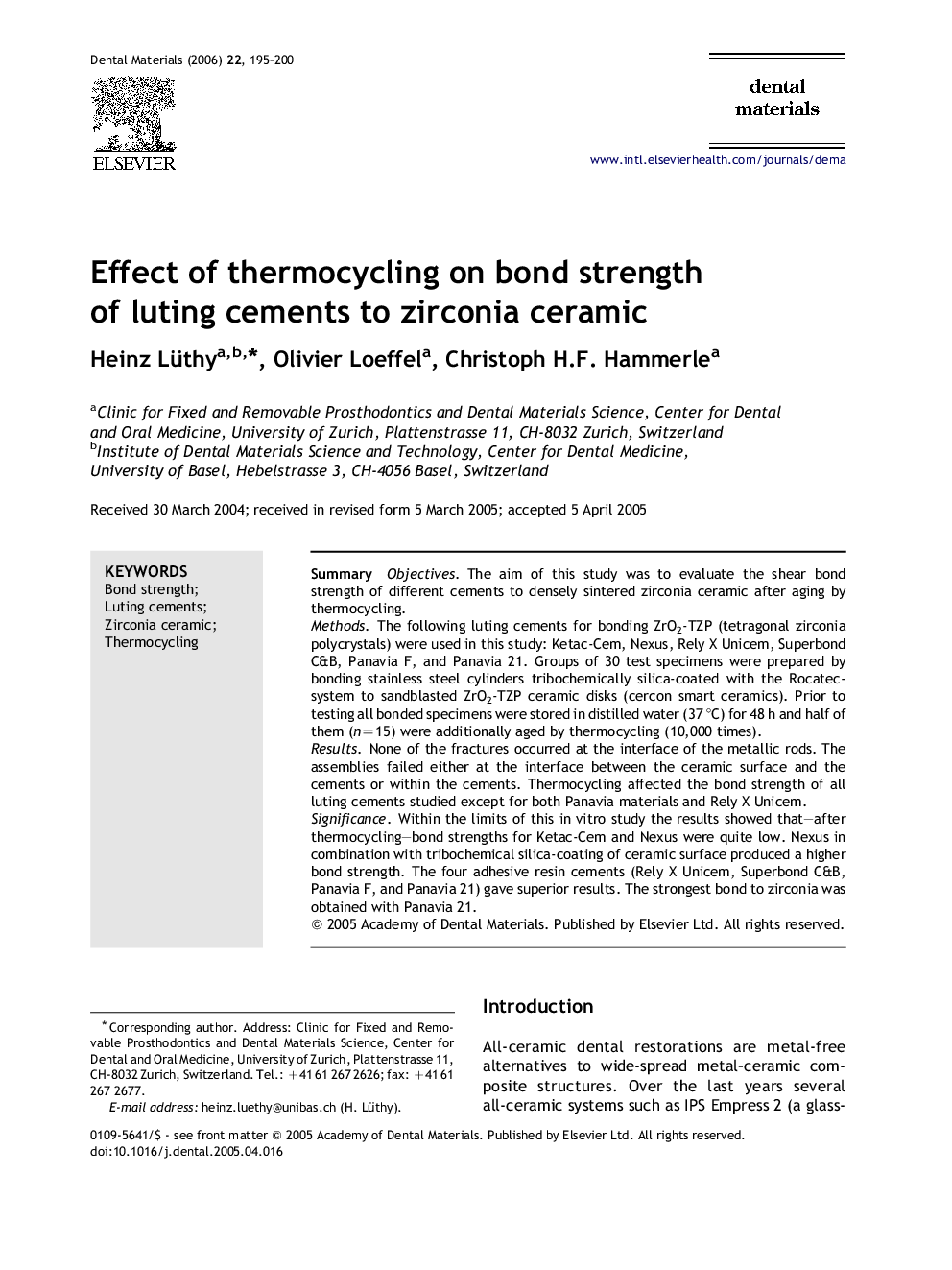| Article ID | Journal | Published Year | Pages | File Type |
|---|---|---|---|---|
| 1423476 | Dental Materials | 2006 | 6 Pages |
SummaryObjectivesThe aim of this study was to evaluate the shear bond strength of different cements to densely sintered zirconia ceramic after aging by thermocycling.MethodsThe following luting cements for bonding ZrO2-TZP (tetragonal zirconia polycrystals) were used in this study: Ketac-Cem, Nexus, Rely X Unicem, Superbond C&B, Panavia F, and Panavia 21. Groups of 30 test specimens were prepared by bonding stainless steel cylinders tribochemically silica-coated with the Rocatec-system to sandblasted ZrO2-TZP ceramic disks (cercon smart ceramics). Prior to testing all bonded specimens were stored in distilled water (37 °C) for 48 h and half of them (n=15) were additionally aged by thermocycling (10,000 times).ResultsNone of the fractures occurred at the interface of the metallic rods. The assemblies failed either at the interface between the ceramic surface and the cements or within the cements. Thermocycling affected the bond strength of all luting cements studied except for both Panavia materials and Rely X Unicem.SignificanceWithin the limits of this in vitro study the results showed that—after thermocycling—bond strengths for Ketac-Cem and Nexus were quite low. Nexus in combination with tribochemical silica-coating of ceramic surface produced a higher bond strength. The four adhesive resin cements (Rely X Unicem, Superbond C&B, Panavia F, and Panavia 21) gave superior results. The strongest bond to zirconia was obtained with Panavia 21.
